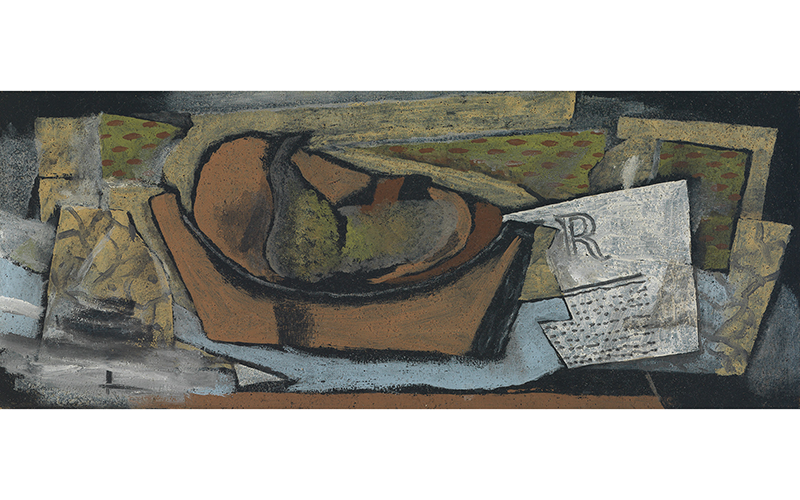- Events & Programs Home
- Calendar
- Accessibility
- Adults
-
Families & Teens
- Families & Teens Home
- 10x10 Teen Art Expo
- Art on the Rise
- Art Together: Art Making for Families with Children Ages 3–5
- Babies Sing with May Festival Minis
- Boy Scouts / Girl Scouts
- CAM Kids Day
- Family Storytime and Gallery Walk
- Family Studio: Art Making for Families with Children Ages 6–12
- Games in the Galleries
- Members-Only Baby Tours
- Public Baby Tours
- REC Reads
- Rosenthal Education Center (REC)
- Saturday Morning Art Class
- See Play Learn Kits
- Summer Camp
- Teen Fest: Zine and Comic Exchange
- RECreate
- Teachers
- Community Outreach
- Fundraisers
- Plan Your Own Event

- Events & Programs Home
- Calendar
- Accessibility
- Adults
-
Families & Teens
- Families & Teens Home
- 10x10 Teen Art Expo
- Art on the Rise
- Art Together: Art Making for Families with Children Ages 3–5
- Babies Sing with May Festival Minis
- Boy Scouts / Girl Scouts
- CAM Kids Day
- Family Storytime and Gallery Walk
- Family Studio: Art Making for Families with Children Ages 6–12
- Games in the Galleries
- Members-Only Baby Tours
- Public Baby Tours
- REC Reads
- Rosenthal Education Center (REC)
- Saturday Morning Art Class
- See Play Learn Kits
- Summer Camp
- Teen Fest: Zine and Comic Exchange
- RECreate
- Teachers
- Community Outreach
- Fundraisers
- Plan Your Own Event
Still Life
Still Life
- Home
- Plan Your Visit
- Art
-
Events & Programs
- Events & Programs Home
- Calendar
- Accessibility
- Adults
-
Families & Teens
- Families & Teens Home
- 10x10 Teen Art Expo
- Art on the Rise
- Art Together: Art Making for Families with Children Ages 3–5
- Babies Sing with May Festival Minis
- Boy Scouts / Girl Scouts
- CAM Kids Day
- Family Storytime and Gallery Walk
- Family Studio: Art Making for Families with Children Ages 6–12
- Games in the Galleries
- Members-Only Baby Tours
- Public Baby Tours
- REC Reads
- Rosenthal Education Center (REC)
- Saturday Morning Art Class
- See Play Learn Kits
- Summer Camp
- Teen Fest: Zine and Comic Exchange
- RECreate
- Teachers
- Community Outreach
- Fundraisers
- Plan Your Own Event
- Give & Join
- About
- Tickets
- Calendar
- Exhibitions
- Collections
- Blog
- Shop
- Art
- Exhibitions
- What, Me Worry? The Art and Humor of MAD Magazine
- Recall. Reframe. Respond. The Art of Paul Scott
- Rediscovered Treasures
- Special Features
- Upcoming Exhibitions
- Past Exhibitions
- Online Exhibitions
- Explore the Collection
- Provenance and Cultural Property
- Conservation
- Meet the Curators
- Digital Resources
- Art Bridges Cohort Program

Georges Braque (1882–1963), France, Still Life, circa 1922, oil on canvas, 7 x 17 7/8 in. (17.8 x 45.4 cm), Cincinnati Art Museum; Gift of Mrs. J. Louis Ransohoff, 1963.531, © 2014 Artists Rights Society (ARS), New York / ADAGP, Paris
Audio Description
Still Life is a seventeen-inch wide oil painting on canvas made around 1922 by the French artist Georges Braque, who lived from 1882 to 1963. It was a gift of Mrs. J. Louis Ransohoff to the Cincinnati Art Museum, where its reference number is 1963.531.
This narrow canvas is painted in muted colors, with sand mixed in the paint giving it a rough texture. At the center a brown bowl holds two pears. Rectangular forms with different patterns occupy much of the rest of the painting, some green with red dots, others tan with grey vein-like lines. Another is white with a large R and the suggestion of newsprint design. The forms give the impression of a table cluttered with books, fabric, newspaper. And yet the schematic, overlapping forms do not give a clear sense of spatial arrangement.
Label Copy
Still Life is a seventeen-inch wide oil painting on canvas made around 1922 by the French artist Georges Braque, who lived from 1882 to 1963. It was a gift of Mrs. J. Louis Ransohoff to the Cincinnati Art Museum, where its reference number is 1963.531.
In the years around 1910, artists in Paris lead by Pablo Picasso and Georges Braque developed Cubism, one of the most significant and revolutionary painting styles in the western tradition. Reducing objects to simple geometric shapes, subverting conventional perspective for flat schematic presentations, and representing multiple viewpoints simultaneously, Cubists offered a fractured vision of the world wholly emblematic of twentieth-century modernity. Still life was the foundational subject for this movement, and its artists were inspired by Cézanne in particular as they created a new pictorial language of living geometries.
Braque remained devoted to the still life genre for much of his career. At the center of this painting, he has rendered a bowl of pears seen at once in cross-section and from above. It rests on a light blue tablecloth alongside a newspaper and books with marbled bindings.
Cincinnati, OH 45202
Toll Free: 1 (877) 472-4226
Museum Hours
Museum Shop
Terrace Café
Library
Cincinnati Art Museum is supported by the tens of thousands of people who give generously to the annual ArtsWave Campaign, the region's primary source for arts funding.

Free general admission to the Cincinnati Art Museum is made possible by a gift from the Rosenthal Family Foundation. Exhibition pricing may vary. Parking at the Cincinnati Art Museum is free.
Generous support for our extended Thursday hours is provided by Art Bridges Foundation’s Access for All program.

General operating support provided by:



